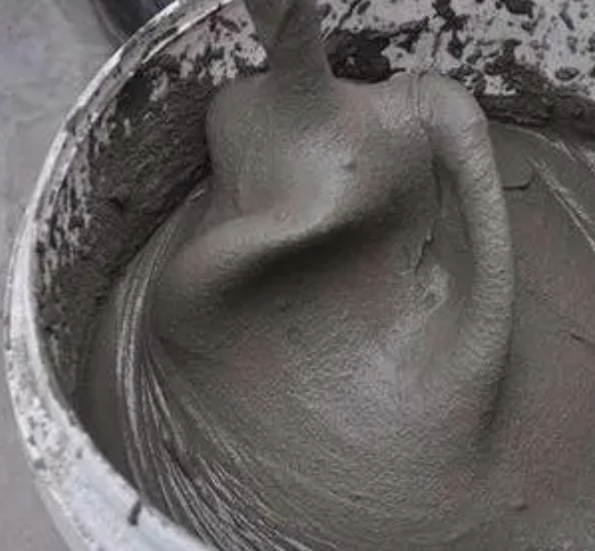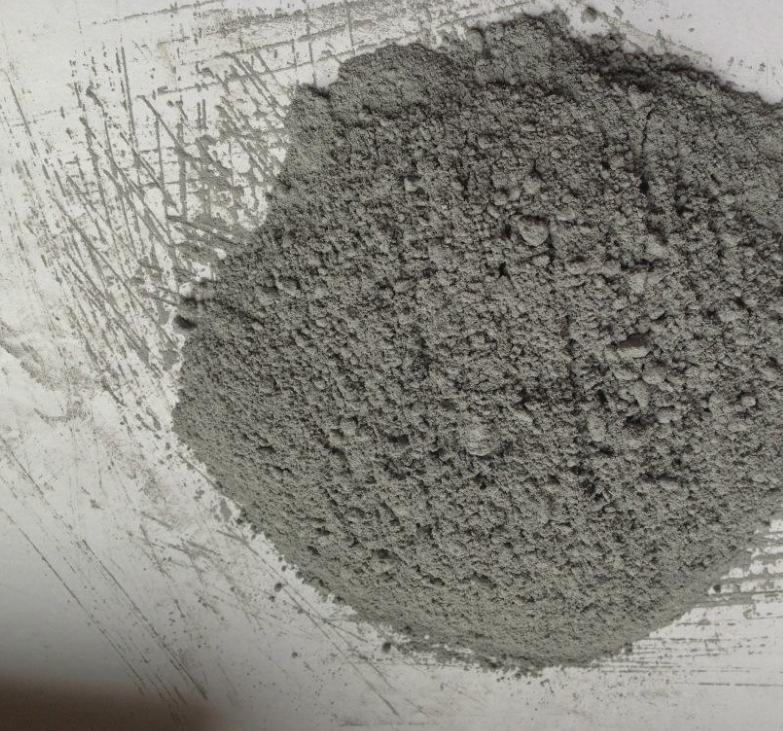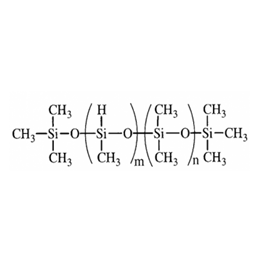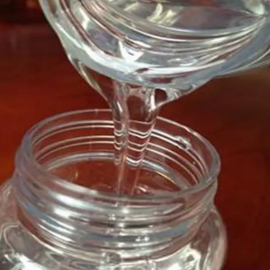Existing foam in cement will seriously affect the appearance of cement products, such as the appearance of honeycomb coal-like surface, reducing the aesthetics; the presence of foam will lead to the strength of cement products is not up to standard, which in turn affects the overall quality and performance; foam will also affect the dispersion properties of cement products, plasticizing properties and fluidity, the processing and use of products to bring about inconvenience; so we need to add silicone antifoam agent to eliminate the foam. Different from mineral oil, polyethylene glycol defoamer, and others, silicone defoamer (silicone oil and silicone emulsions) eliminates the foam, What are the benefits of silicone defoamer in cement production?
Silicone defoamer is a kind of chemical additive used in the process of concrete construction, its role is to reduce the bubble content inside the concrete, to avoid a large number of bubbles in the concrete, and to affect the strength and compactness of the concrete. Cement defoamer can effectively improve the working performance and durability of concrete, but also improve the permeability and frost resistance of concrete. Adding cement defoamer in the construction process can improve the quality and performance of concrete.
The following four aspects of the role of silicone defoamer in cement:
- Why choose silicone defoamer?
- What is the role of silicone defoamer?
- How to use silicone defoamer in cement?
- How to make the cement quality better?
1. Why choose silicone defoamer?
Silicone defoamer plays an important role in the production and construction of cement and its products, and its benefits are mainly reflected in the following aspects.
(1) Elimination and control of foam:
Silicone defoamer can quickly destabilize the foam, make the foam rupture and quickly dissipate, so as to restore the fluidity of cement products. This helps to avoid the adverse effects of foam on cement construction and quality, to ensure the smooth progress of the construction process.

(2) Improvement of product quality:
By eliminating the foam, the silicone defoamer can improve the compactness and strength of cement and its products, and enhance the stability and durability of the products. At the same time, it also helps to reduce the waste of raw materials and the extension of production time, thus reducing production costs.
(3) Improvement of construction conditions:
The use of silicone defoamer can reduce the amount of foam on the surface of the mortar, and reduce the surface viscosity so that the mortar is easier to construct and level. In addition, it can also improve the permeability of cement slurry, reduce the resistance of air bubbles to the pumping process, and improve construction efficiency.

(4) Enhancement of impermeability:
Silicone defoamer can exclude the air bubbles in the cement paste body, fill the gaps between the cement particles, and improve the densification and impermeability of the cement paste body. This helps to prevent water penetration and chemical intrusion, thus enhancing the service life and safety of the building.
In summary, silicone defoamers have significant advantages in the cement production and construction process, which can improve product quality, improve construction conditions, enhance impermeability, and so on. Therefore, the use of cement defoamer is an effective solution where foam control is required.
XJY-702 Dimethylsiloxane Copolymer is non-toxic and odorless, with active Si-H groups. These silicone oils can be used as a basic raw material for foam stabilizers, defoamers, water-soluble silicone oil, and other products.

XJY-6010/XJY-6011/XJY-6012 Methyl Silicone Defoamer
It is a solid powder resin. This resin can provide good defoaming, hydrophobic, and waterproof performance.

2. What is the role of silicone defoamer?
Silicone-based defoamers are a chemical added to the cement mixture. Its function is to inhibit the formation of air bubbles in the cement mixture in order to avoid the negative effects of air bubbles in the mixture, such as accelerated drying of the cement and reduced fluidity of the mixture.
(1) Silicone defoamer has low surface tension in the mixture so that the bubbles can be dissolved more easily. Its very low surface tension can produce a unique chemical reaction in the mixture, thus inhibiting the formation of air bubbles. The result of this chemical reaction in the cement mixture is that the molecules of the silicone defoamer are adsorbed on the surface of the bubbles, thus making the bubbles more stable.

(2) Silicone defoamers can improve the fluidity and treatability of the mixture. Air bubbles in the mixture can reduce the fluidity and handleability of the mixture, which can cause the cement paste to become sticky and difficult to handle. Adding a cement defoamer inhibits the formation of air bubbles and improves the flow and handleability of the mixture, thus making the mixture easier to use and handle.
(3) Silicone defoamers also enhance the water resistance and durability of the mixture. Over time, air bubbles will gradually expand in the mixture, which will lead to a decrease in the quality of the cement mixture. Adding a cement defoamer slows down the expansion of air bubbles and enhances the water resistance and durability of the mixture, resulting in a more durable mixture.
Overall, cement defoamer is a very useful chemical that can produce many positive effects in cement mixtures. If you need to improve the flow and workability of your mixture, enhance the water resistance and durability of your mixture, or prevent air bubbles from forming in your mixture, then considering adding a cement defoamer is a good option. Whether you're building, repairing, grouting, or doing any other kind of cement work, cement defoamers can help you achieve better results.
3. How to use silicone defoamer in cement?
Silicone defoamer is a kind of aqueous systems additive specially designed to solve the problem of air bubbles in cement products. It can effectively eliminate air bubbles in cement products and improve the quality and appearance of the products. The following are the methods of using organosilicon defoamer:

(1) Pre-testing:
Before formally using the silicone defoamer, it is recommended to carry out some tests to determine the optimal use amount and effect. According to the specific cement material and product type, carry out appropriate tests and adjust the usage amount to achieve the best effect.
(2) Preparation of cement paste:
According to the required cement products and recipe requirements, mix the cement and other raw materials according to the normal preparation method to form cement paste.
(3) Adding antifoaming agent:
In the process of mixing the cement paste, gradually add the organosilicon antifoaming agent to the cement paste. The specific amount of defoamer can be determined according to the test results or production experience, and it is usually recommended to add an appropriate amount of defoamer in each cubic meter of cement slurry.
(4) Mixing evenly:
After adding the organosilicon defoamer, use the stirrer or stirring rod to stir the cement paste fully to ensure that the defoamer is evenly dispersed in the cement paste.
(5) Observation and adjustment:
During the mixing process, observe the air bubbles in the cement slurry and adjust the amount of cement defoamer used appropriately according to the needs. If more air bubbles need to be eliminated, the amount of defoamer used can be increased appropriately.

(6) Use cement slurry:
During the production process, appropriate vibration or exhaust treatment can be carried out as needed to help the air bubbles be released from the cement slurry.
The exact method of use may vary with different cement defoamer brands and products. It is recommended to read the product instructions carefully before use and follow the recommendations and methods of use provided by the manufacturer. In addition, depending on the specific product requirements and process, some adjustments and optimization may be required to obtain the best defoaming effect.
4. How to make the cement quality better?
Silicone defoamers improve the densification and bonding of cement. By reducing air bubbles and pores in the cement, silicone defoamers can significantly improve the strength, compression resistance, and durability of cement, and reduce surface imperfections and defects. Whether at room temperature or high temperature, silicone defoamers can maintain their excellent defoaming properties and ensure the stability of cement quality in many industrial processes. How to improve the competitiveness of your products?
XJY Silicones is one of the leading silicone MQ resin and VMQ silicone manufacturers in China, with more than 30 years of R&D and manufacturing experience in the silicone industry as well as more than 15 related patents and technical support. Our silicone raw material products can meet the needs of the defoamer field and support the provision of diversified customized solutions.



